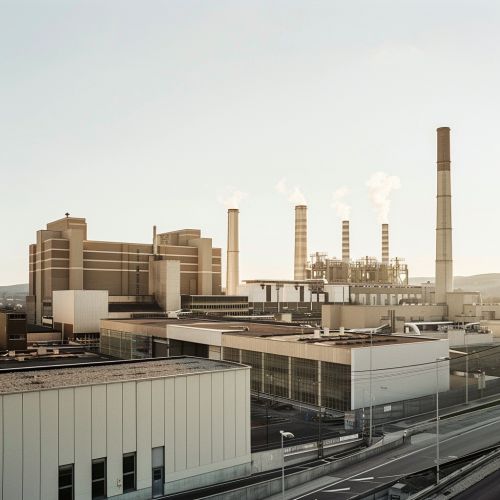Power Station
Overview
A power station, also referred to as a power plant or powerhouse, is an industrial facility for the generation of electric power. Power stations are typically constructed on a large scale and are designed to convert energy from various sources into electrical power. The energy sources harnessed to turn the generator vary widely. Most power stations in the world burn fossil fuels such as coal, oil, and natural gas to generate electricity. Others use nuclear power, but there is an increasing use of cleaner renewable sources such as solar, wind, wave and hydroelectric.

History
The first power station was designed and built by Thomas Edison in Pearl Street Station, New York in 1882. This station used reciprocating steam engines to turn direct-current generators. Because of the DC distribution, the service area was small, limited by voltage drop in the feeders. Edison's DC empire quickly gave way to alternating-current systems, first using synchronous converters and then using rotating generators, which could be interconnected to serve large areas.
Types of Power Stations
Power stations can be categorized into thermal power stations, hydroelectric power stations, nuclear power stations, and renewable energy power stations.
Thermal Power Stations
Thermal power stations use heat to produce steam, which drives a steam turbine connected to a generator. The heat is often obtained from burning fossil fuels, mainly coal and natural gas. A less common method uses gasification of solid or liquid fuels.
Hydroelectric Power Stations
Hydroelectric power stations use flow of water to spin a turbine connected to a generator. Water is usually stored in a reservoir or dam to create a head of water.
Nuclear Power Stations
Nuclear power stations use nuclear reactions to heat water and create steam, which drives a steam turbine connected to a generator. The heat is generated from nuclear fission in a nuclear reactor.
Renewable Energy Power Stations
Renewable energy power stations generate electricity from renewable energy sources, such as solar power, wind power, and hydro power. These types of power stations are becoming increasingly common as the effects of climate change are becoming more apparent.
Operation
The operation of a power station involves multiple steps. First, the fuel is used to generate heat within a boiler. In the case of solar thermal energy, heat is generated by collecting sunlight. For nuclear power stations, heat is generated from a nuclear reaction. This heat is used to convert water into steam, which drives a steam turbine. The steam turbine is connected to a generator, which produces electricity. The electricity is then transmitted over power lines to homes, businesses, and factories.
Environmental Impact
Power stations have significant environmental impacts, primarily through the emission of pollutants into the atmosphere. These pollutants can cause air pollution and contribute to climate change. However, power stations that use renewable energy sources such as wind, solar, and hydro power have significantly less environmental impact, and are therefore becoming increasingly popular.
Future Trends
The future of power stations lies in the increased use of renewable energy sources. Solar and wind power stations are becoming increasingly common, and advancements in technology are making these types of power stations more efficient and cost-effective. Additionally, the use of nuclear power is expected to increase in the future due to advancements in nuclear technology and increasing concerns about climate change.
